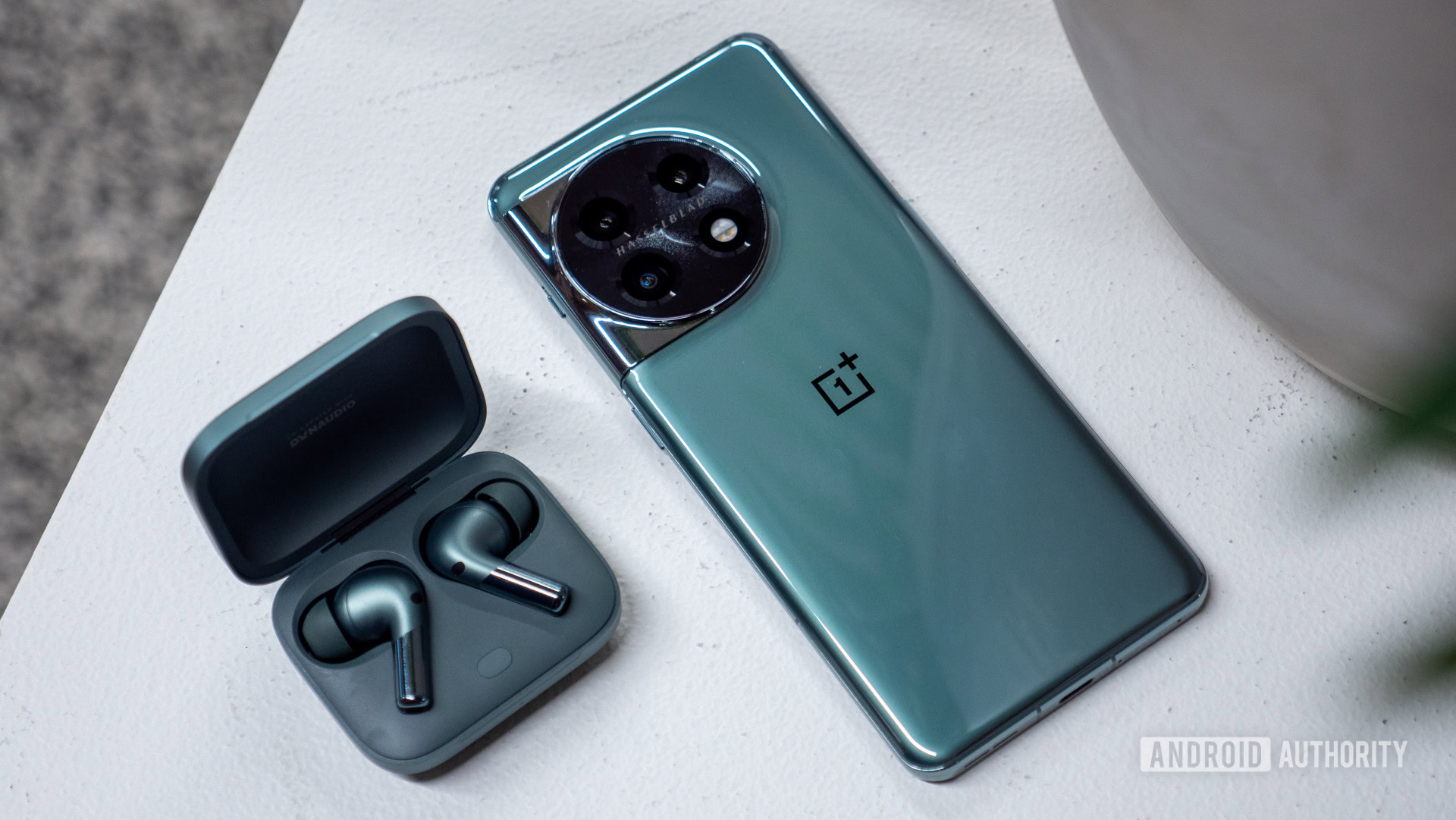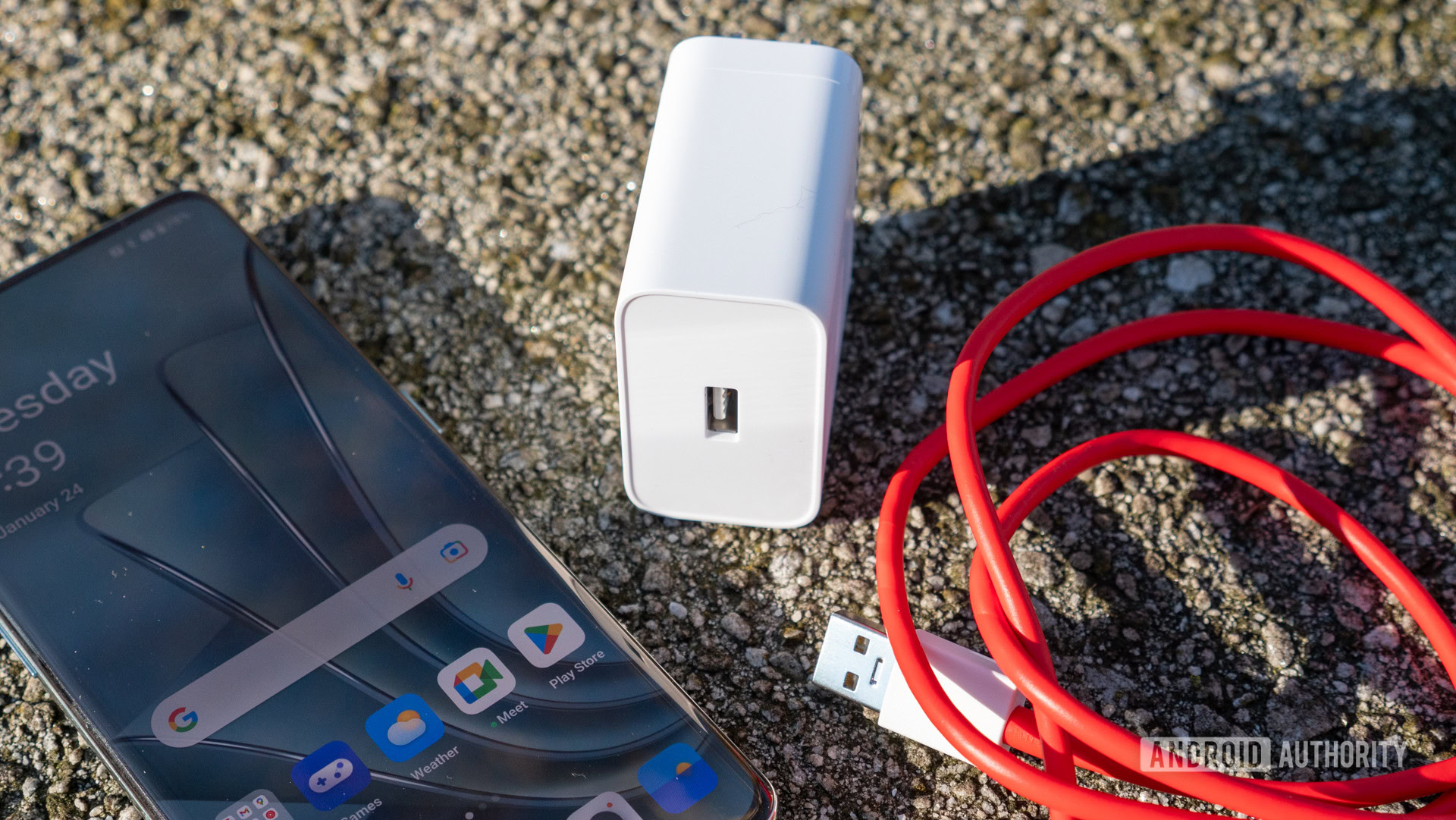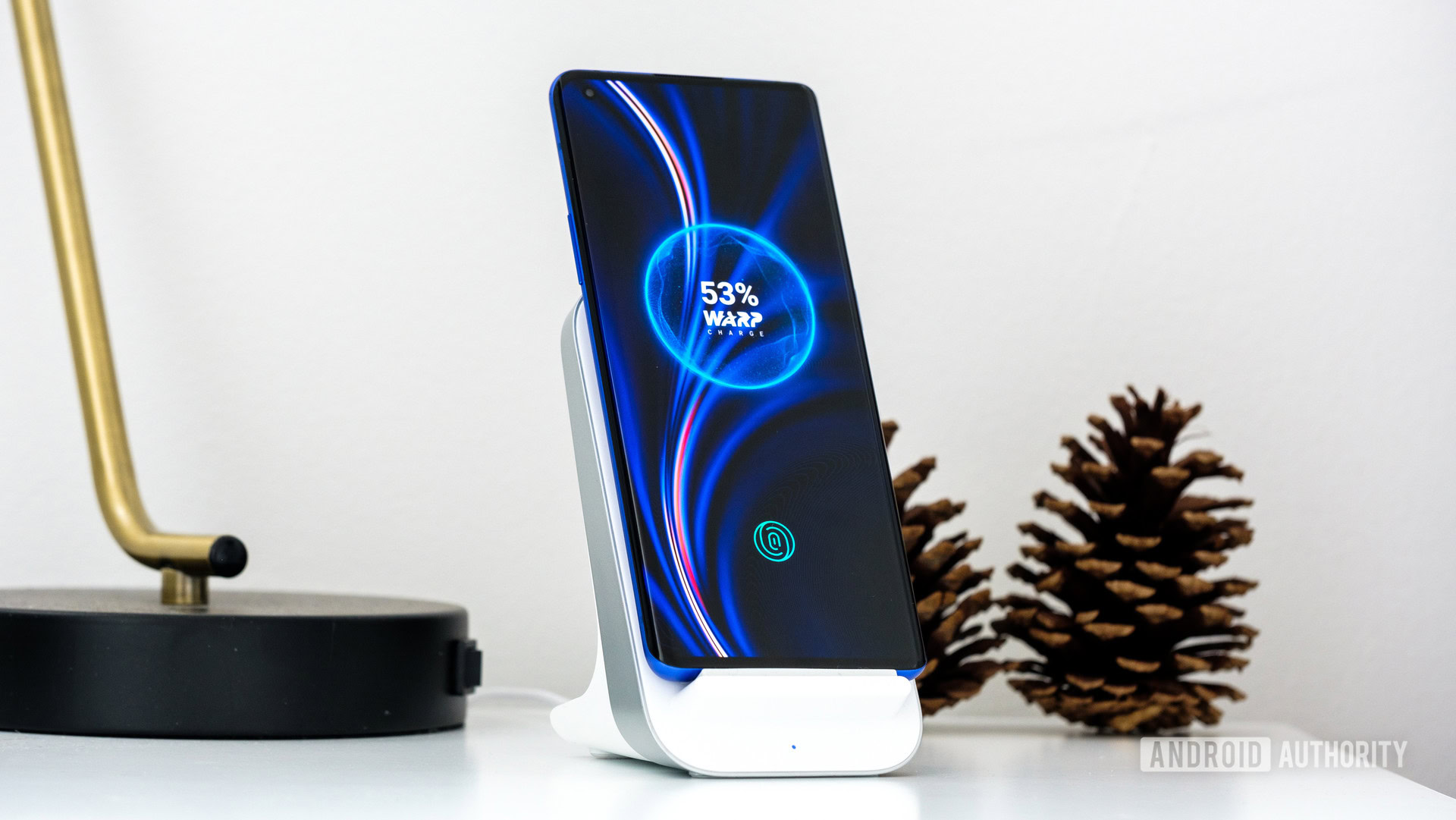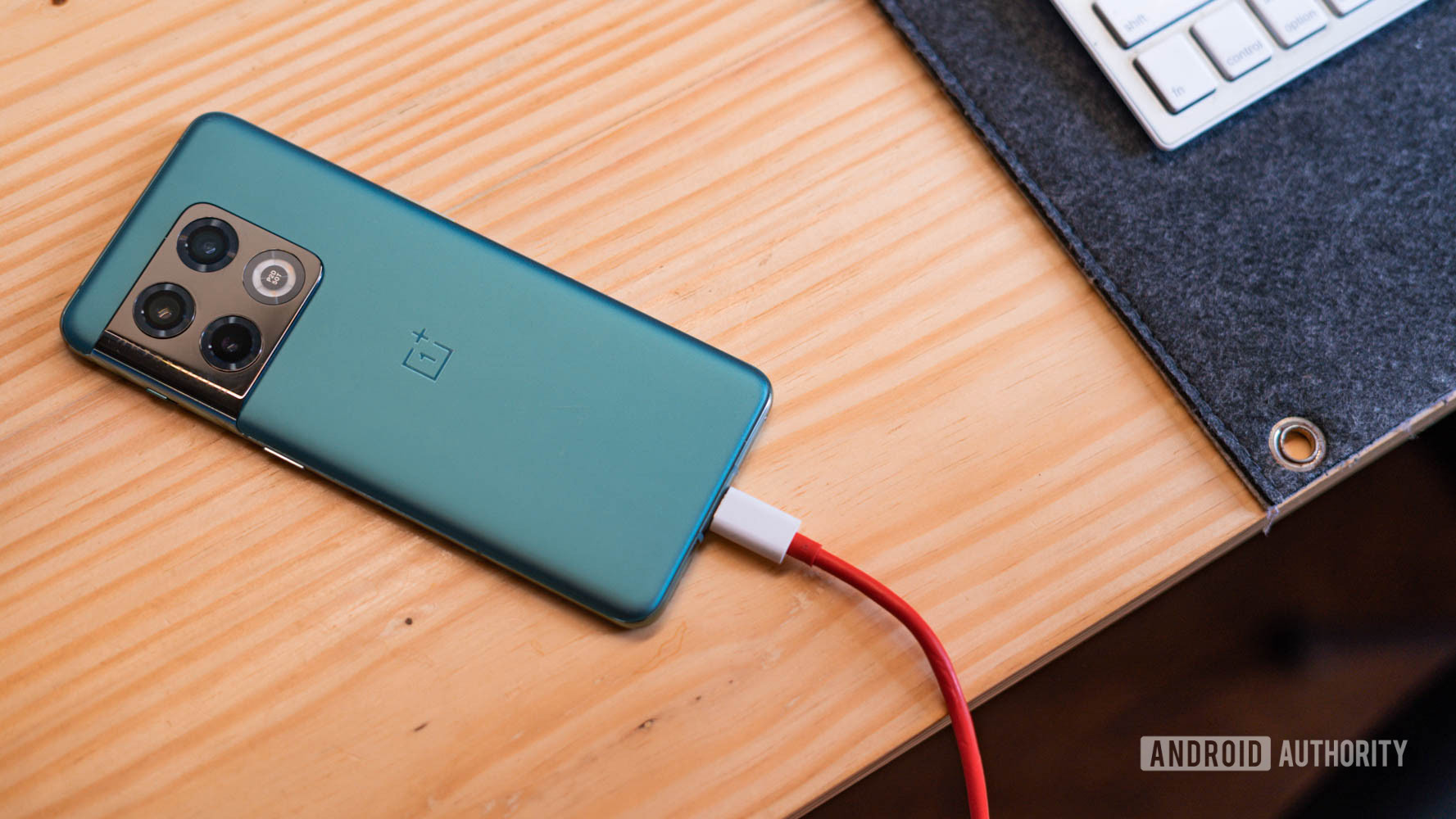Affiliate links on Android Authority may earn us a commission. Learn more.
Hey OnePlus, this isn't how you do charging in 2023
Published onFebruary 19, 2023

OnePlus and charging are like peanut butter and jelly — they just feel right together. From distinctive red cables to fancy names like Warp Charge and SuperVOOC, it’s hard to have one without the other. Even budget-friendly Nord devices get faster charging speeds than rivals from Google, Apple, and Samsung. Of course, those high standards also mean that any time OnePlus puts a charging foot out of line, it’s going to raise some eyebrows. Well, consider our eyebrows up because the OnePlus 11 charging strategy makes no sense right now.
There’s a charger, but…

We’ll give OnePlus some credit for continuing to include a charger with its devices long after other brands have let it go out to pasture with the headphone jack. Sometimes, it’s a pretty good charger, too — I still carry the 160W USB-C block that came with the OnePlus 10T everywhere I go. So, it wasn’t a surprise to find a charger bundled with the OnePlus 11, but what was surprising was the connection type. USB-A. In 2023. Complete with a USB-A to USB-C cable.
OnePlus did, of course, offer an explanation for its decision, though one that makes less sense the longer you think about it. As explained to us, the OnePlus 11 comes with a USB-A to USB-C cable and a USB-A charger because if you’re at a hotel and forget your charger, the built-in outlets are more likely to have USB-A connections than USB-C. Sure, it means that you’ll be able to charge your phone in a pinch, but it ignores the fact that a standard USB-A port won’t have the hardware to support 80W (or 100W) charging on your OnePlus 11. You’d still need your included block for fast charging, no matter the outlet type.
What good is a hotel's USB-A port if your OnePlus 11 crawls to the finish line?
The explanation makes even less sense when you look at the chargers from the last few OnePlus launches. USB-C has been the standard — at least on a flagship level — as far back as the OnePlus 8T. Why would the need for a USB-A port at a hotel only become an important explanation now? OnePlus even offered a deep dive into the OnePlus 10T’s charging capabilities, touting its Power Delivery support and universal 150W charging speed while presumably having this about-face already planned out.
Where did wireless charging go?

While we’re on the topic of confusing u-turns, you won’t find the OnePlus 11 among the best wireless charging phones anymore. That feature’s gone too. Admittedly, OnePlus wasn’t the fastest to adopt wireless charging. It didn’t make an appearance until 2020 when it landed on the OnePlus 8 Pro along with a USB-C charger. Wireless charging then spread to the entire OnePlus 9 series before picking up speed — literally — on the OnePlus 10 Pro. Now, it’s gone. It technically followed the alert slider out the door on the OnePlus 10T, but, unlike the slider, wireless charging hasn’t come back.
If OnePlus had simply never installed wireless charging, we’d probably be questioning why not, but it’s altogether stranger to offer it and then remove it from later flagship generations. The brand offered an explanation shortly after the USB-A and hotel excuse, saying that the team at OnePlus felt that its wired charging speeds were fast enough that most people wouldn’t miss wireless charging. It makes sense, to an extent, as the OnePlus 11 can charge in a few blinks of an eye, but it ignores other features that consumers have come to rely on, like reverse wireless charging or the convenience of setting your phone on a charging pad in your car.
OnePlus felt fast wired charging means users won't miss slow wireless, but it forget the convenience.
Even stranger, the new OnePlus Buds 2 Pro, which launched alongside the OnePlus 11, do support wireless charging. They offer solid battery life, but if they run out and you’re away from the charger and an outlet, you’re out of luck. At least, out of luck if you have the OnePlus 11. Instead, you’d either have to have a second phone, which serves as your dedicated power bank, or carry a charger and cable with you at all times and hope for a nearby outlet.
Speed isn’t everything

So we’re totally clear, OnePlus and charging speeds are still peanut butter and jelly. The OnePlus 11 breezes back to a full cell and barely breaks a sweat. However, there’s more to a good, reliable USB setup than just charging.
USB standards also set the tone for data transfer, and the OnePlus 11 is still equipped with USB 2.0, which was established back in 2000. The dated standard means that the OnePlus 11 (like every OnePlus flagship before it) can only transfer data at up to 480Mbps, while rivals like the Samsung Galaxy S23 Ultra with USB 3.2 can transfer files 10 times faster. No, you might not notice if you’re just sending a few photos to your laptop, but 8K video files will leave you waiting quite a bit longer.
OnePlus' charging might be the hare, but its data transfer speeds are still the tortoise.
Also, while your hotel room might (emphasis on might) have a USB-A port, there’s no guarantee that your laptop will. Apple led the charge in stripping away everything but the USB-C ports from its MacBook lineup, and several Windows players followed suit. Sure, the MacBook Pro has reclaimed a few of its lost ports, but rivals like the Dell XPS 13 and HP Spectre x360 haven’t been as quick to turn around. You’ll either have to carry around another USB-C cable to swap files back and forth or be content to transfer everything through the cloud.
If you just want the OnePlus 11 for its raw charging speed, more power to you (literally). It sprints back to a full charge and asks you to ignore its other charging quirks and USB shortcomings. It ignores its recent past and tries to go back to industry standards that are no longer the standard. No matter the number of excuses that OnePlus offers, there’s just no good way to make sense of its current approach to charging.
What do you think? Is charging speed good enough, or should brands be relying on well-rounded features instead? Let us know in the poll below.